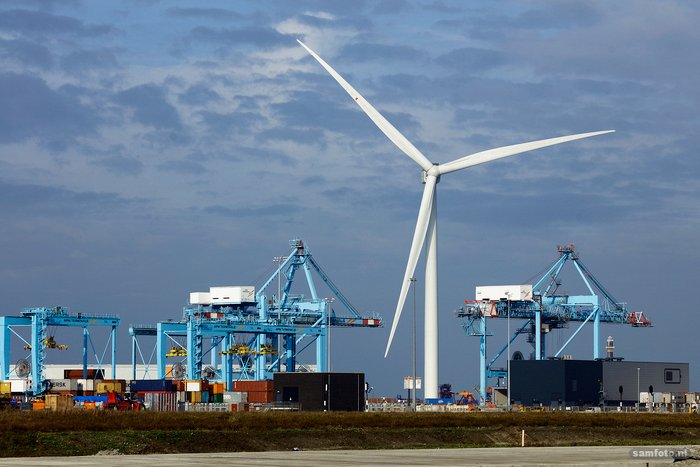Integrating wind energy in the electricity grid
Wind turbines are getting bigger and bigger. According to professor Dominic von Terzi, offshore wind farms will need to diversify if they are to fit into the future energy mix.
Von Terzi used to work with General Electric, and his enthusiasm is still palpable when he talks about GE’s prototype 12 MW wind turbine on the Maasvlakte. At a height of 260 metres, the HaliadeX is the ‘largest machine ever built by man’. The HaliadeX was celebrated in Time Magazine as one of the 100 most sustainable innovations and is a candidate for future offshore wind farms.
But the wind farms of the future will also have to operate smartly to connect to the future electricity grid. At present, about 15% of electricity comes from wind power. That share is expected to grow to 40% or more by 2050. This means that the output of wind farms will have to be less variable than the wind itself.
“You need to increase your revenue,” explains Von Terzi. Electricity generates additional revenue when demand exceeds supply, which causes prices on the energy market to rise. That is why it can be profitable to store energy in batteries when the price of electricity is low, so that when the wind drops and prices rise, it can be sold at a higher price.
Another option is to store energy in the form of hydrogen. An electrolyser can be built into the wind turbines or installed on a platform near a wind farm. Von Terzi’s students are currently studying various options. One of these is the dual-use wind farm; an offshore wind farm that produces electricity when the market price is right, and hydrogen when the price of electricity drops. Such a wind farm will require both a power cable and a gas pipeline to the mainland. Won’t that be too expensive? It depends, says Von Terzi. “If you have to build it from scratch, it probably will be, but pipelines lie all over the North Sea bed, and a dual-use wind farm could connect to these, if the authorities allowed it.” .
